 France (1947-1952)
France (1947-1952)
Light Tank – 1 Prototype Built
The Second World War left France’s tank industry in an uncertain state. One of Europe’s largest and most sophisticated tank manufacturers prior to the four year German occupation which mutilated France’s military industry while simultaneously very severely limiting design work on not only new tanks, but also engines and armaments. Whether France could recover and become a military-industrial powerhouse, or at least major player, was still uncertain.
It is in this context that, in 1947, the French Army would establish requirements for an airborne, 12-tonnes light tank armed with a high-velocity 75 mm anti-tank gun with anti-armor capacities, a fairly ambitious prospect. Three manufacturers were approached to design such a vehicle, or at least its chassis: the state workshop of AMX, the locomotive-turned-tank manufacturer Batignolle-Châtillon, and lastly, the old Mediterranean shipyard of Forges et Chantiers de la Méditerranée (FCM).
Ambitions from Ashes
Before the outbreak of the Second World War, France was one of the largest tank manufacturers on the European continent and in the world, second only to two nations which far outmatched France’s population and industrial potential, Germany and the Soviet Union. The defeat of France in 1940, of which inadequate tank designs and use is one of many culprits, led to the country being occupied all the way to the summer of 1944. Outside of a few covert projects undertaken by a secretive organisation of the Vichy regime, the CDM, new developments were practically stopped. The few new designs considered, such as the SARL 42, largely took the basis of elements existing or already being studied in 1940. France was wholefully unable to keep up with the technological advancements that countries with intact or at least functioning tank industries were developing and fielding during the war.

Following France’s liberation by the Western Allies and FFI (Forces Françaises de l’Intérieur – ENG: French Forces of the Interior) uprisings in the summer of 1944, the new French leadership, still under Charles de Gaulle, was very keen on ensuring France’s independence to the best of their capacities. This included resuming work on indigenous armaments projects as swiftly as possible. The first of the post-war designs would be worked on as early as 1944, largely based on pre-war designs and concepts or salvaged German equipment, adapted as best as possible to still be suitable for use in a postwar context. The two best examples of these first attempts at kicking a tank industry back on its feet, the ARL 44 and Panhard 178B, were neither revolutionary nor even truly modern vehicles, yet one could hardly say they were not successful in their roles. The ARL heavy tank was the first true French tank manufactured post-war, helping the industrials get back into shape, while the Panhard 178B not only did the same for France’s most important wheeled armored fighting vehicles manufacturer, Panhard, but also provided an indigenous vehicle to supplement the plethora of American and British types used to maintain a French colonial empire now at the brink of collapse, particularly in Indochina.
Work on these vehicles was well underway by the summer of 1946. The Panhard 178B had entered mass-production, while the ARL 44 at least had a functional vehicle completed, though it would eventually be a far fetch from the production standard. Following this, more ambitious and truly new vehicles could begin to be considered.
It is in this context that, in September 1946, the French EMA (Etat Major des Armées – ENG: Army General Staff) requested DEFA (Direction des Études et Fabrications d’Armement – ENG: Armament Studies and Manufacturing Direction), the organism in charge of managing the production of French military equipment, to oversee the creation of an air-transportable reconnaissance vehicle which would weigh 12 tonnes at most. Within the French Army’s technical services, there was a preference for a light tank which would feature heavy armament for its weight, making it able to engage enemy armor, rather than be a more passive, lightly-armed reconnaissance vehicle. Mobility was also an important factor to compensate for the necessarily weak armor such a vehicle would possess. As such, one could describe the vehicle which was envisioned as the combination of a reconnaissance vehicle, a light tank and a tank destroyer. Furthermore, as early as January 1947, additional variants, in the shape of an anti-aircraft vehicle and a self-propelled artillery piece which were to share a common chassis with the light tank, were being considered.
At this point, DEFA offered the STA (Service Technique des Armées – ENG: Armies Technical Service) the outline of three concepts. All would share an oscillating turret, a concept previously given only minimal attention, but which was viewed as potentially a good option to save weight. The concepts varied in the muzzle velocity of their 75 mm main guns, the goals being 600, 878 and 920 m/s. The STA expressed interest in an oscillating turret fitted with the higher muzzle velocity main gun, a concept it accepted on 10th February 1947. By late February, the concept had been passed on to the EMA, which set requirements for a 12 tonnes vehicle with a 75 mm gun that could reach at least 850 m/s, and optimally 1,100 m/s. At least 40 rounds were to be stowed within the vehicle. Fuel capacity was to be at least 300 l.

After these few months of back and forth and development of the concept by French Army structures, the requirements were eventually passed on to three manufacturers on 24th April 1947. These were the Atelier Mécaniques d’issy-Les-Moulineaux (AMX, ENG: Issy-Les-Moulineaux Mechanical Workshop), the Compagnie générale de Construction de locomotives Batignolles-Châtillon (ENG: Batignolles-Châtillon general locomotives Construction Company) and the Forges et Chantiers de la Méditerranée (ENG: Forges and Shipyards of the Mediterranean). All three had designed armored vehicles pre-war, though Batignolles-Châtillon did not have any production vehicles to its name. AMX had designed the R40, an evolution of the R35, and taken part in manufacturing the B1 Bis, while FCM had also had its own B1 Bis manufacturing chain as well as its own FCM 36 and FCM 2C designs.
The manufacturers were only requested to design the hull, as well as eventually the casemate for the self-propelled artillery version. The turrets for the light tank as well as anti-aircraft vehicles were to be procured from separate manufacturers.
The set of projects from all three companies were approved by the STA on 24th May 1948 and cleared to continue. It appears that mock-ups were constructed by all manufacturers in the following months, though no views of the FCM mock-up appear to have survived. The known set of plans of the vehicle is dated from 4th September 1948 and is indicated as “revised after inspection of the mock-up”. It features a shorter version of the gun that would eventually be used within the FL 4 turret, the future 75 mm SA 50. By this point, the FCM project was estimated to weigh 11,360 kg in combat conditions, still a fair bit under the 12 tonnes limit. In the meantime, in July 1948, the industrial company of Fives-Lilles presented its mock-up of the FL 4 oscillating turret which was to be fitted into the 12 tonnes light tank vehicles.
The FCM project progressed further and a prototype hull was completed in February 1949. After trials in Toulon in March, it was presented to the French Army’s technical services in July, the same month as its competitor from AMX, and a whole 11 months before Batignolles-Châtillon would submit their own.
Design
The FCM 12t’s Hull
The hull designed by FCM used a rear turret and placed the driver and powertrain at the front, as did the other two 12t proposals. The total length of the hull was to be 4.485 m. Including the gun mounted in the FL 4 turret, the tank would be 6.570 m long. 3.875 m separated the center of the sprocket from the center of the idler. The tank was 2.080 m tall with the FL 4 turret, with the hull itself being 1.130 m tall. The vehicle was 2.4 m wide, though this could be raised to 2.5 m with a different set of tracks. The hull itself was 1.7 m wide, while the ground clearance was 30 cm.
The FCM hull used welded construction. This had been a staple of FCM back in the 1930s, when this was very much a novelty in French tank design, the FCM 36 light tank being the only French mass-produced welded tank. By the late 1940s however, the Second World War had demonstrated the advantages of welding over casting and particularly bolting or riveting, and what was once an FCM specialty was now pretty standard. An interesting feature of the FCM design was that the frontal section of the hull was designed to be easily removable. This included most of the major mechanical components save for the engine itself: the preselective gearbox, transmission, and drive sprockets could be swiftly taken out for maintenance or even to be quickly replaced in this fashion.

The driver sat to the left of the hull front, while the engine was installed to the right. The FCM 12t used a front transmission and a rear idler. The driver would maneuver the vehicle using either a steering wheel or a unique lever. The drive sprockets were linked to hydraulic brakes the driver would operate using pedals. Each sprocket could be braked independently, which would allow rotating the tank by using the movement of a single track. The cutch was also assured by a pedal while the gearbox was operated by a lever. Acceleration was also assured by a pedal, which was also associated with a hand-operated command. Overall, the FCM 12t was noted to be practically identical to a car in how it was driven. The driver had a periscope for vision.

The armor was “30 mm equivalent” on the frontal arc, apparently differing in actual thickness depending on each exact section to match with 30 mm of effective thickness. The sides were 20 mm thick while the floor was 10 mm. The roof was of unknown thickness, but likely 10 mm as well, seeing as that thickness was also the one of the roof of the FL 4 turret.
Powerplant and Suspension
The FCM 12t’s engine was a Mathis 8 G X 00 8-cylinders 6,560L gasoline engine. At the nominal rotation rate of 3,000 rounds per minute, it would provide 210 hp. The engine was water-cooled. 415 l of gasoline could be stored within the FCM 12t’s fuel tanks. The radiator’s tanks contained 35 l of water. The brakes had a total of 10 l of oil in their fuel tanks, while the gearbox had 8, the engine 12 and the gearbox 40. The gearbox had four forward and a backward gear, but was coupled with a reduction system which increased the total of forward gears to eight.
The FCM 12t’s suspension has often been described as a ‘Christie-type’, and shared features present in vehicles using this type of suspension. Thanks to the use of large road wheels, it could be towed without its tracks, or in emergency situations, chains could even be put up linking the drive sprockets with the front road wheels, and the vehicle could then move at moderate speeds under its own power in such a configuration.

The FCM 12t used four large road wheels mounted on pneumatic springs. Both the 1948 schematics and the configuration the prototype adopted in 1950 used wheels with puncture-proof pneumatic rims. However, the initial configuration of the prototype’s road wheels differ from the schematics and this later configuration. Instead, it used fully metallic wheels. Even more curiously, the front road wheel appears to have been an entirely different design from the three to its rear. The reasoning behind such a configuration is unknown, however chances are it was just due to the adequate road wheels not being ready for one reason or another. The center of each roadwheel was separated by 81.5 cm. The vehicle lacked any return rollers. It used a front sprocket and a rear idler.
83 track links per side appear to be present on the schematics. The initial tracks of the FCM 12t were 30 cm wide, but provisions were made for 35 cm wide tracks which would increase the width of the tank by 10 cm, reaching 2.5 m. The tracks featured fairly prominent guide horns.
Turrets
The FCM 12t hull was designed to interchangeably mount two different turrets.
The first was the Fives-Lilles FL 4. This was an oscillating turret, the first known French post-war development in the field. It had been designed to mount a high-velocity 75 mm anti-tank gun. On the FCM 12t, it first appeared with a ‘short gun’ that was likely the projected weapon firing at 850 m/s, but the weapon that appears to have been durably retained would instead be the “1,000 m/s” 75 mm gun, which would eventually be standardized as the 75 mm SA 50. The FL 4 oscillating turret allowed for an elevation of 13° and a depression of -6°.
This 75 mm SA 50 featured two armor-piercing shells. Both weighed 21 kg, with the projectile being 6.4 kg, and had a muzzle velocity of 1,000 m/s. The first, the POT modèle 1951/POT-51A (Perforant Ogive Traceur – ENG: Armor-Piercing Capped Tracer/ APC-T), would penetrate 110 mm at 90° and 60 mm at 30°, at a range of a kilometer. The second, PCOT modèle 1951/PCOT-51P (Perforant Coiffé Ogive Traceur – ENG: Armor-Piercing Capped Ballistic Cap Tracer / APCBC-T), would penetrate 170 mm at 90° and 40 mm at 30° at the same range of a kilometer. Lastly, a high-explosive shell existed, which had the same velocity but was slightly lighter (20.6 kg), with a projectile weight of 6.2 kg and an unknown explosive charge.

The FL 4 was a two-man turret, with the commander to the left of the gun and the gunner to the right. The reason for this reduced crew was that the turret used a bustle autoloader system, with two 6-round revolver magazines located in the rear bustle of the turret. This solution took less space than a manual loader and, as such, helped lighten the vehicle, which was necessary for the air-transportability requirement. A total of 45 75 mm rounds would be stowed within the vehicle. The turret had a coaxial MAC 31 7.5 mm machine gun, with 1,050 rounds of ammunition stored. Frontal protection for the turret would be equivalent to 40 mm, while the sides and presumably rear were 16 mm thick and the roof 10 mm.
Observation devices included seven periscopes in the observation cupola for the commander, while the gunner could use an observation and targeting periscope as well as a gun sight. The turret featured an American SCR-508 radio, which would be shared by all versions of the vehicle. With the FL 4 turret, the vehicle was to weigh around 12.5 tonnes and be 2.080 m high.
The other turret which was to be featured in the FCM 12t was the SAMM S232 anti-aircraft turret. It was designed by the Société d’Application des Machines Motrices (ENG: Motor Machines Application Society) and was designed to be mounted on each of the three 12t light tanks projects. The first prototype was completed in May 1949.


This turret’s armament consisted of four MG 151/20 20 mm autocannons of German origin. It was the standard 20 mm autocannon for Luftwaffe aircraft for most of the war. It fired 20×82 mm cartridges at a rate of up to 750 rounds per minute, with a muzzle velocity of up to 785 m/s. MG 151s, both in the 15 and 20 mm versions, were fairly widely used in post-war France, including in armored vehicles designs. Ammunition stowage in the FCM 12t with the anti-aircraft turret was to be of 2,000 rounds.
The S232 turret was 1.020 m high. As it was designed for anti-aircraft use, it had a high maximum elevation of 80°, with a more moderate depression of -5°. The turret used cast construction and was fully enclosed. The front had the same 40 mm of effective thickness as the FL 4, as did the sides at 16 mm. Likely in order to improve resistance to strafing, the roof armor was quite significantly thicker at 30 mm.
Interestingly enough, the FL 4 turret appears to never actually have been mounted on the FCM 12t. The only known views of the prototype show it either without a turret, or with the S232 anti-aircraft turret, and the mobility trials were likely undertaken under these two configurations.
Artillery Version
As with the Bat-Chat and AMX, FCM designed a casemate artillery vehicle based on its 12t tank hull.

This vehicle replaced the turret by a rear-mounted casemate which featured a centrally-mounted 105 mm modèle 1950 gun. The vehicle was meant for artillery use and, as such, elevation could go up to 67°, while depression went to -5°. The arc of fire was 40° forward.

The vehicle was to be 2.1 m high and 4.69 m long. Armor protection was of 30 mm frontally and 20 mm on the sides and roof. The weight was to be 12.5 tonnes.
The vehicle likely would have had a crew of five, as the 105 mm artillery piece on the AMX chassis eventually did, two loaders, a gunner, a commander and the driver. Ammunition stowage indicated on the schematics show 30 rounds stored towards the front of the vehicle, 15 on each side of the main fuel tank, while ten rounds were stored in the rear sides of the casemate, seven on the left and three on the right. The artillery model never reached prototype stage.

Trials and Performances
The FCM 12t prototype was completed and first run by FCM in February 1949. The first preliminary trials were held in Toulon, on the Mediterranean coast, on 8th and 9th March 1949. In June 1949, a first trial concluded the vehicle provided a maximum speed of 60 km/h on-road, with a range of about 300 km. Ground pressure was of 750 g/cm² and the turning radius was of 5 meters. The tank could climb a 75% slope.

The vehicle was transferred to the French Army’s trial center of Satory in November 1949, which led to more extensive trials being performed. On 17th November 1949, a 39 km trip was conducted between Satory and Raimbouillet to establish the performance of the vehicle. This trip began at 2:47 pm and was concluded by 5:40 pm. At 3:32 pm, after 28 km had been crossed, the vehicle stopped to assert the temperature of oil and water, which was at an adequate level. At 3:51 pm, a second stop was conducted, as a small leak of the radiator’s water tank was seen. Finally, a third stop was conducted at 4:26 pm as the water leak had, at this point, become very important.
During this trip, the FCM 12t was able to cross 1 km in 56 seconds, giving an average speed of 64 km/h. The quickest 2 km to be crossed by the vehicle were crossed in 2.15 minutes, giving an average speed of 53.5 km/h. 28 km were crossed in 45 minutes, giving an average cruise speed of 37 km/h. The vehicle was noted to be easy to pilot, with very good direction controls. The suspension was also noted to be highly satisfactory. The only real issue with the chassis were the water leaks within the radiator.
Modifications
The vehicle was handed back to FCM in early 1950 for modifications. It appears that it was at this point the vehicle received the pneumatic wheels rims and S232 anti-aircraft turret, though this cannot be certain.

The vehicle was returned to the French Army for further experimentation in late 1950. However, by this point, the AMX vehicle had been picked for mass-production in December 1949. As such, while experimentation on the FCM hull continued to an extent, it was very unlikely this would result in any sort of production for the vehicle.
An accident of unknown nature interrupted the trials of the FCM 12t again in July 1951. This would practically be the end of the experimental career of the prototype. It was nonetheless restored to operational conditions by FCM and returned to the Army in 1952, but to no avail. Trials did not resume and the FCM 12t was de facto rejected. The prototype was likely scrapped in the following years, seeing as no trace of its existence appears to remain.

Conclusion – One of the last FCMs
The FCM 12t was, in most regards, a decent light tank, quite comparable to its AMX or Batignolles-Châtillon competitors. While FCM only really developed the chassis, it appears to have been mostly satisfactory. Trials seem to report the vehicle provided an easy and smooth drive while the suspension was deemed very satisfactory. The only major issue with the vehicle appears to have been a leaking radiator. Nonetheless, AMX’s offering was solid as well, and would eventually be picked for mass-production, becoming what would be one of the most successful light tanks as well as French AFVs from the Cold War, the AMX-13.
For FCM, the 12t was one of the last forays into armored vehicles design, alongside a vehicle designed for the much heavier 50 tonnes tank program, the FCM 50t. The shipyard would fail to secure any orders for its first post-war designs, which was not too different from a death sentence, at least in the field of armored fighting vehicles manufacturing, seeing as the manufacturers had already been weakened by years of war. While the 12t tank program would play a major role into AMX becoming the de facto main producer of tracked armored fighting vehicles for the French Army, this was at the expense of the older FCM, of which the involvement in tank design had started all the way back in 1916 with the FCM 1A.

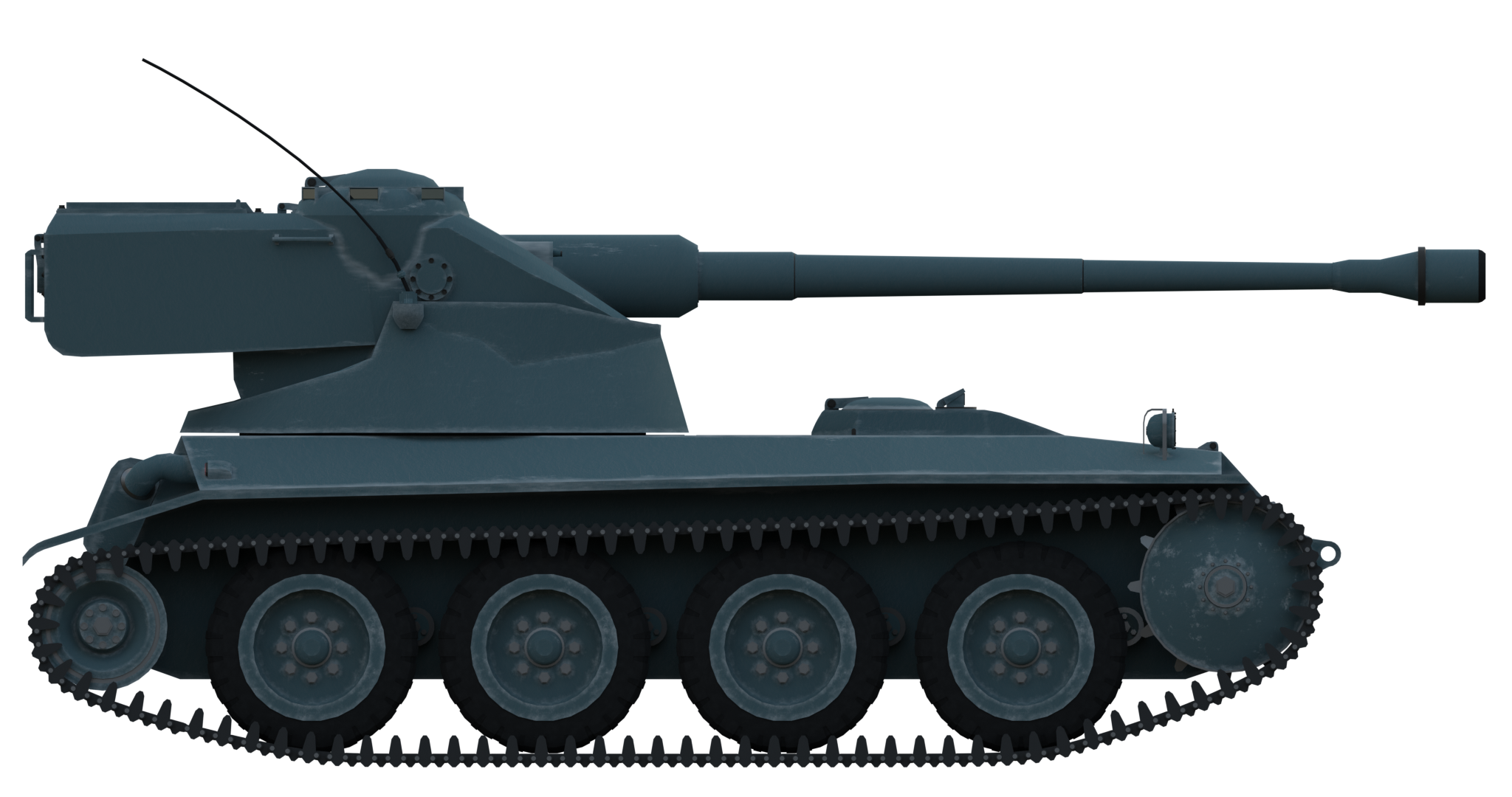



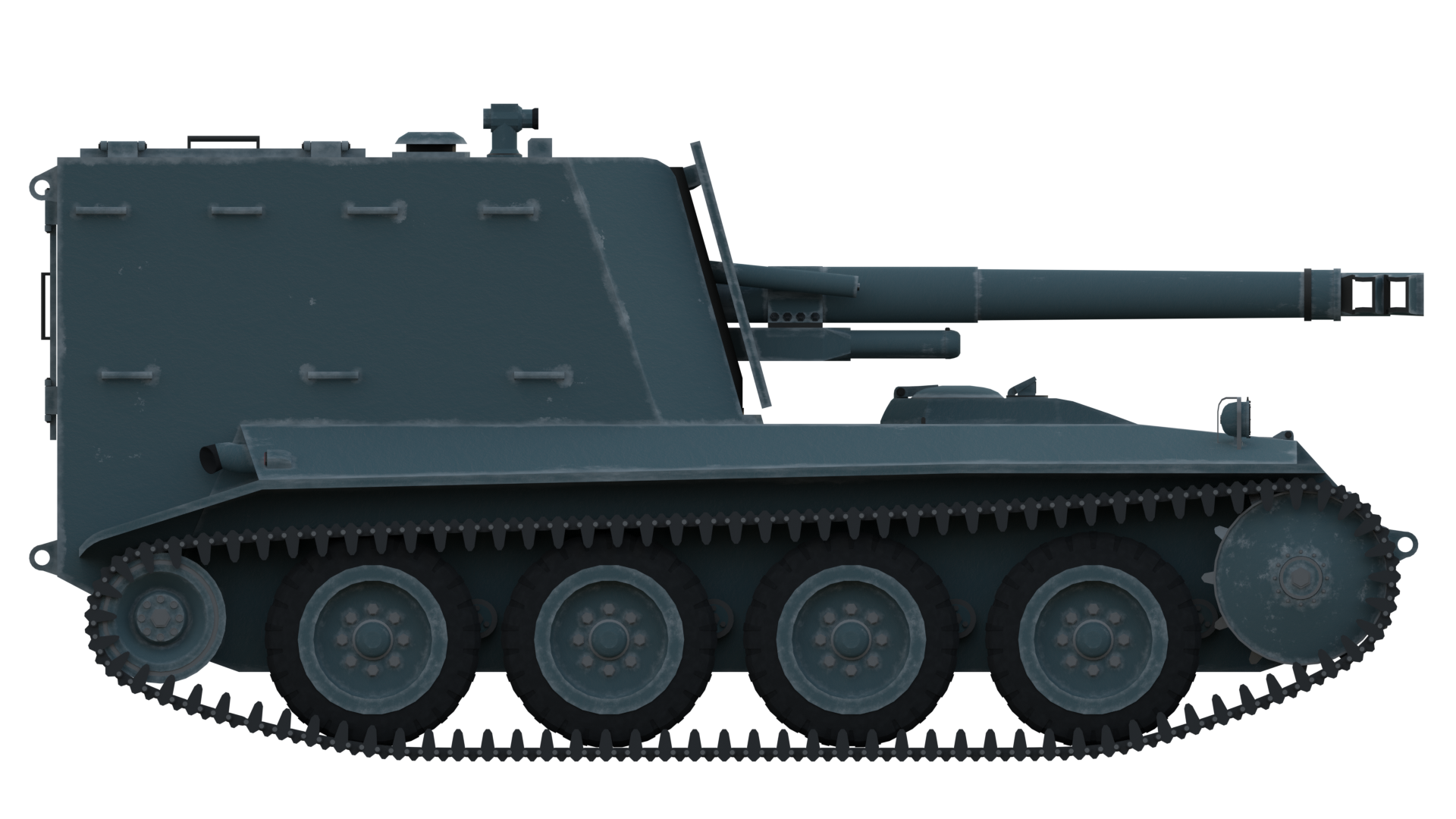
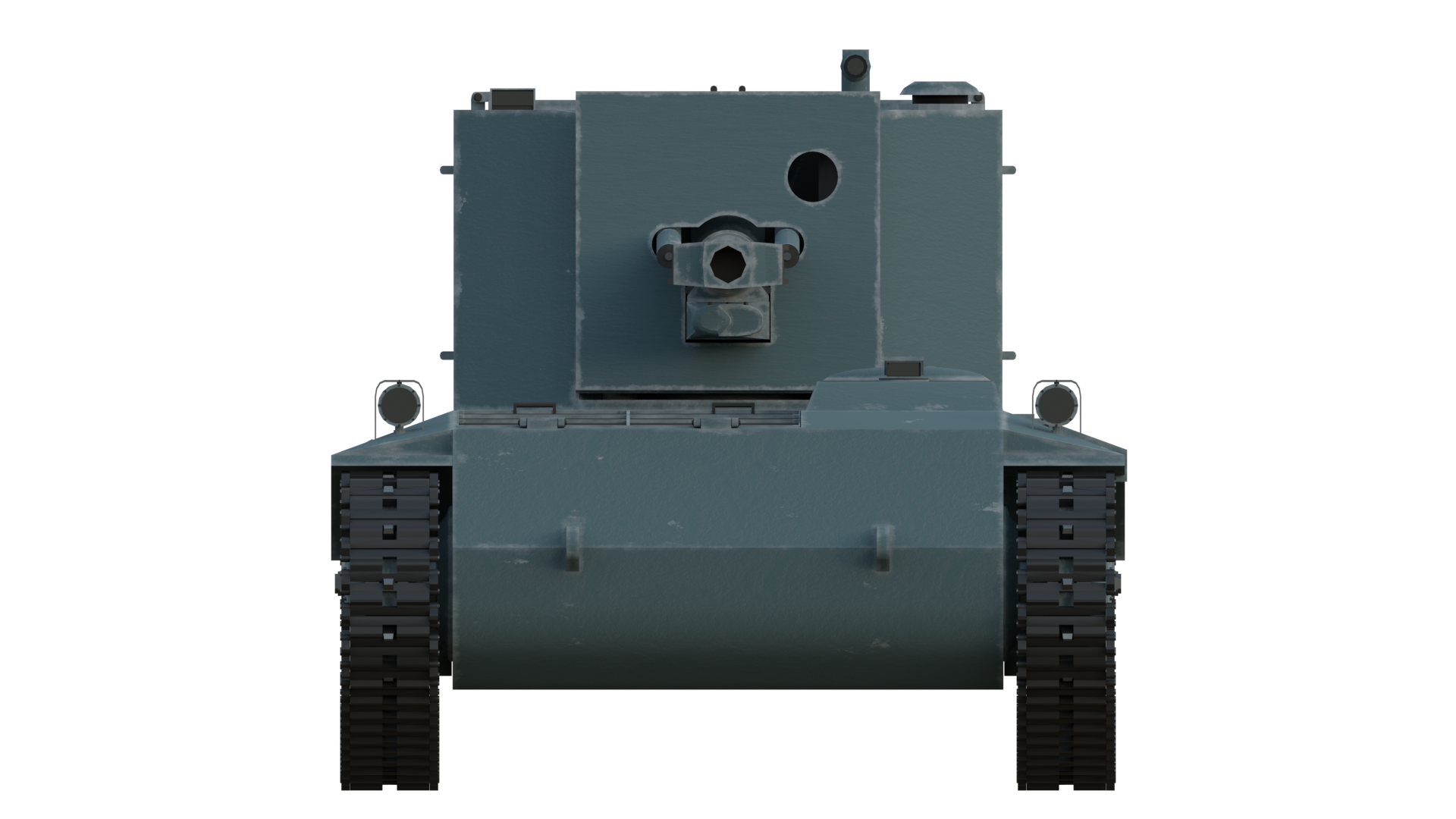
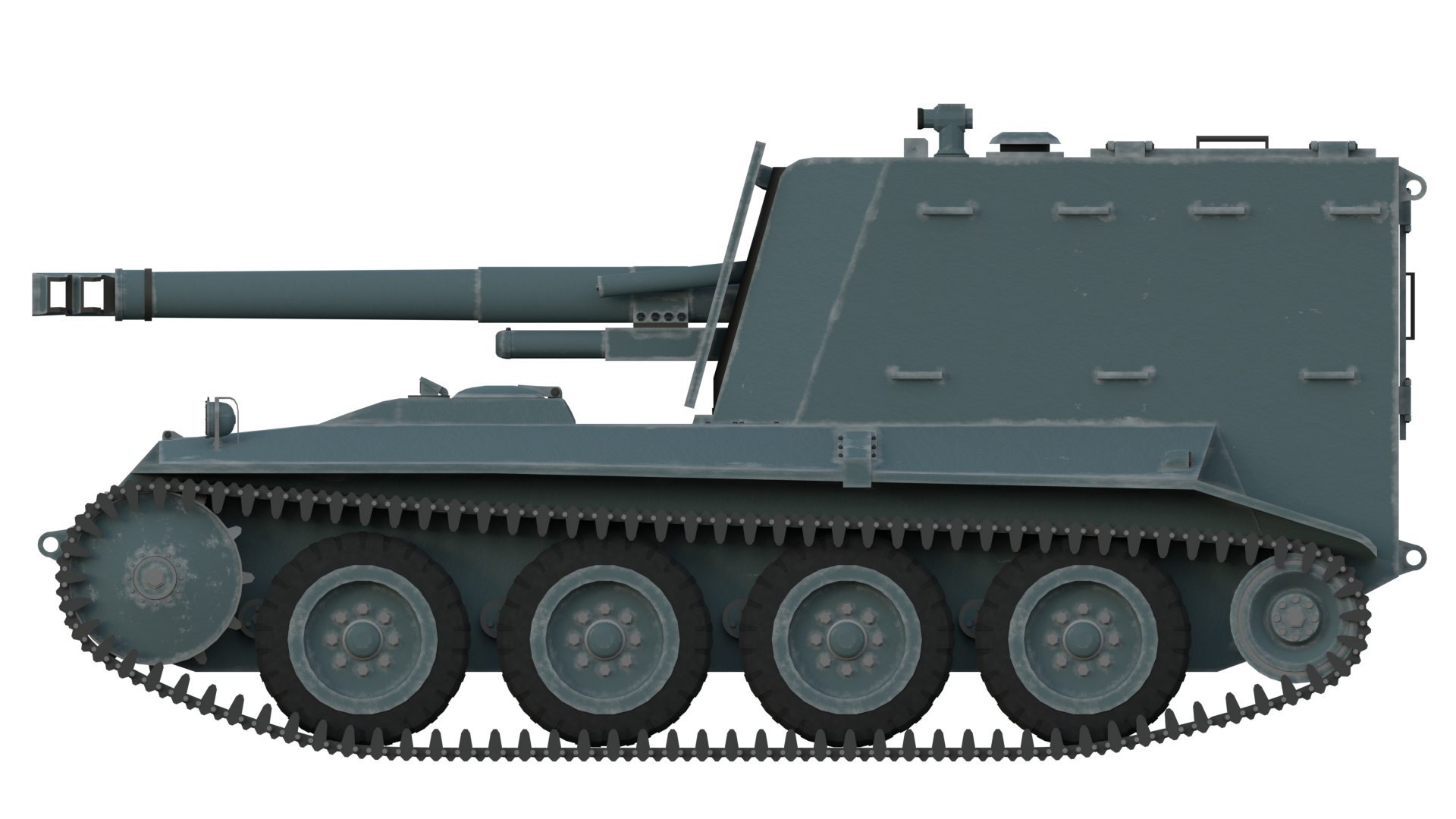
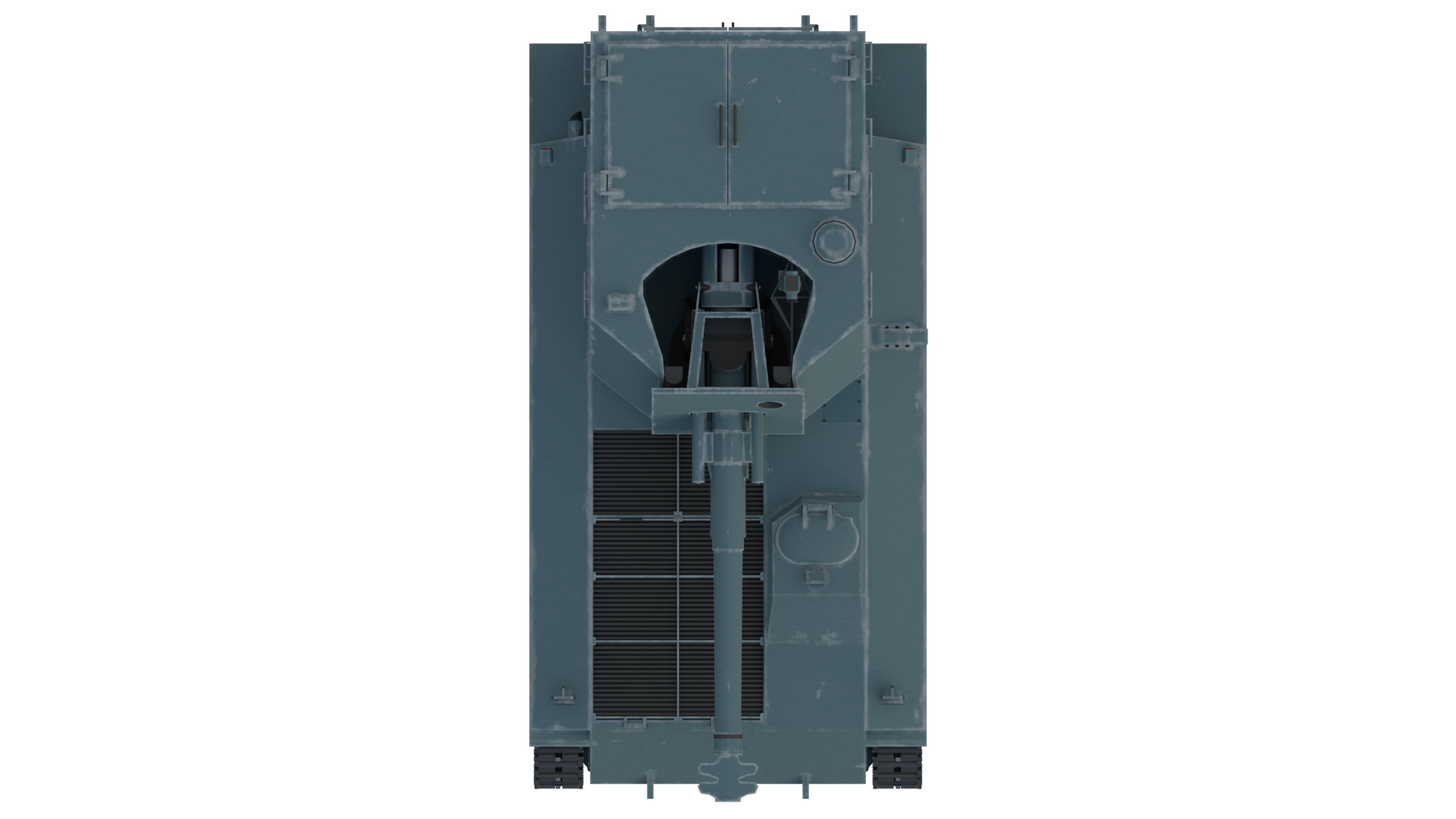
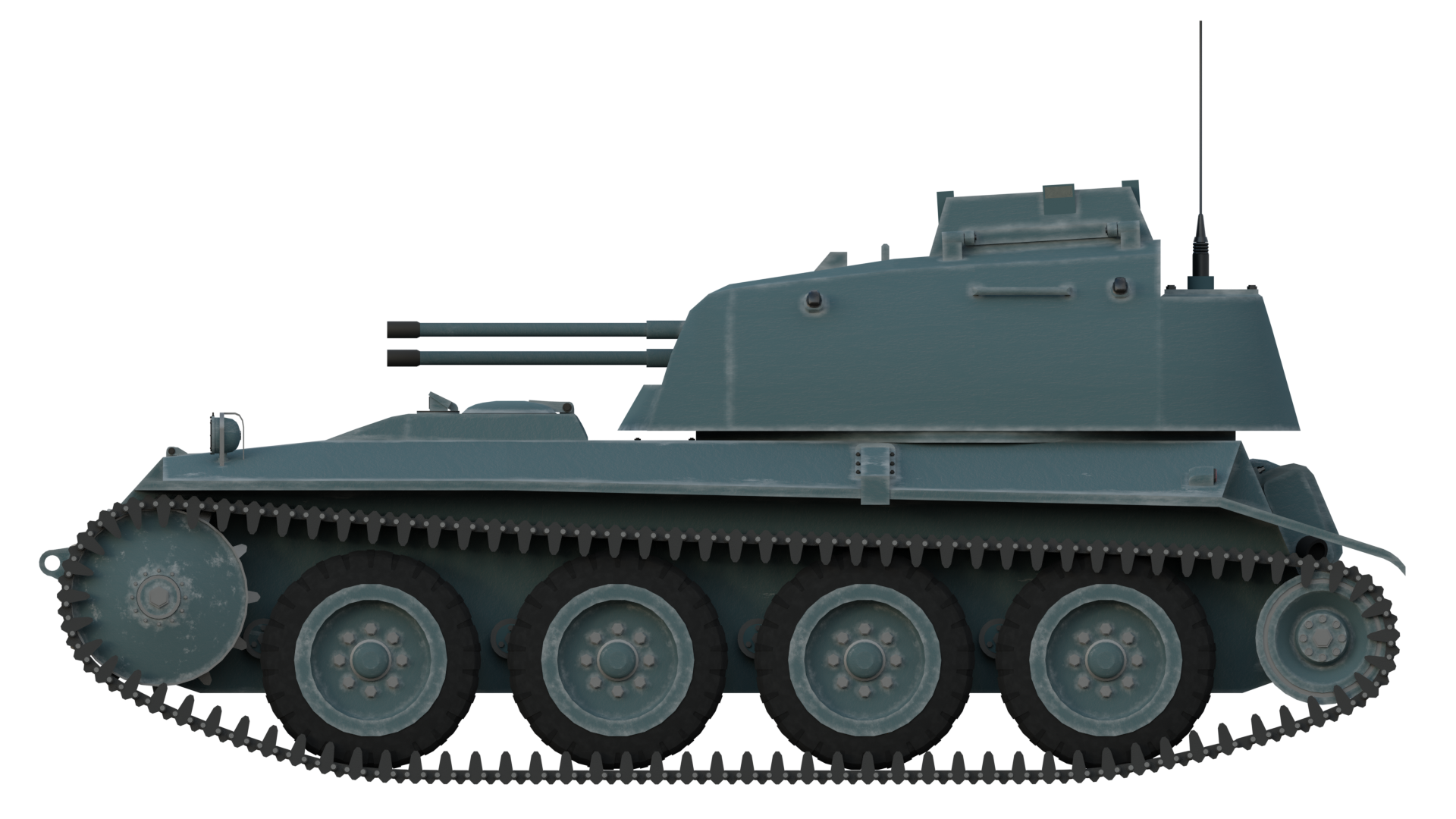
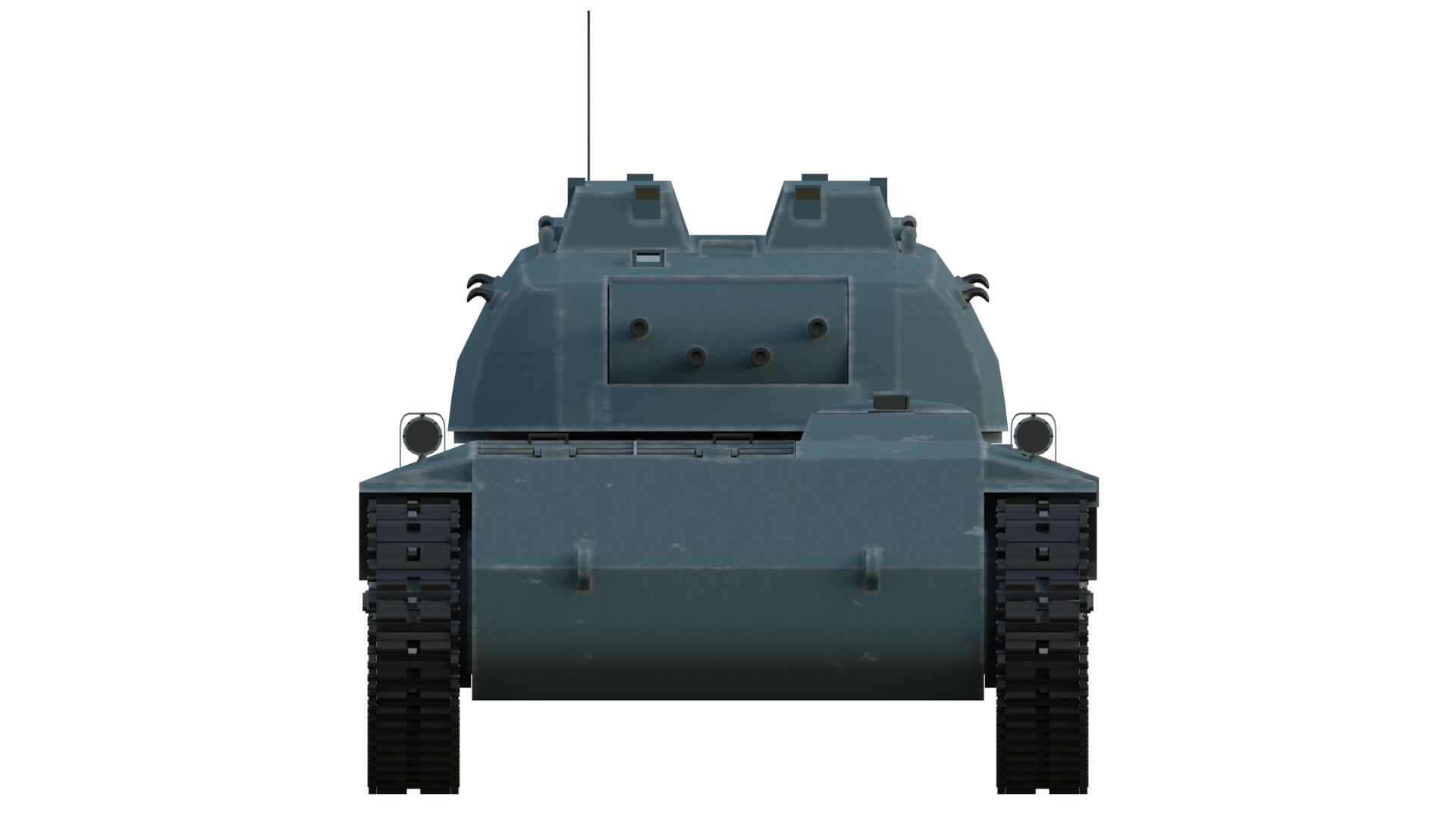
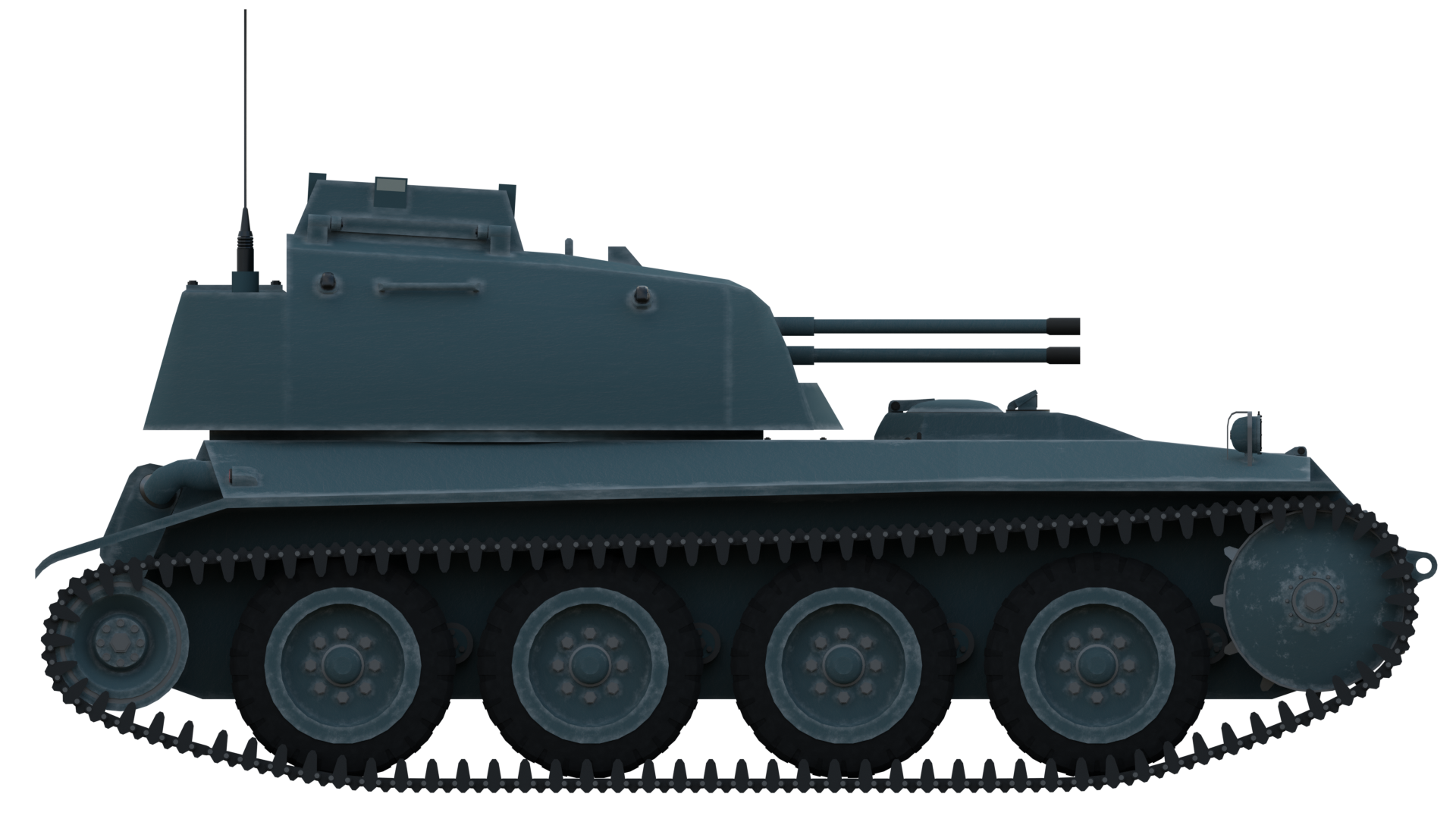
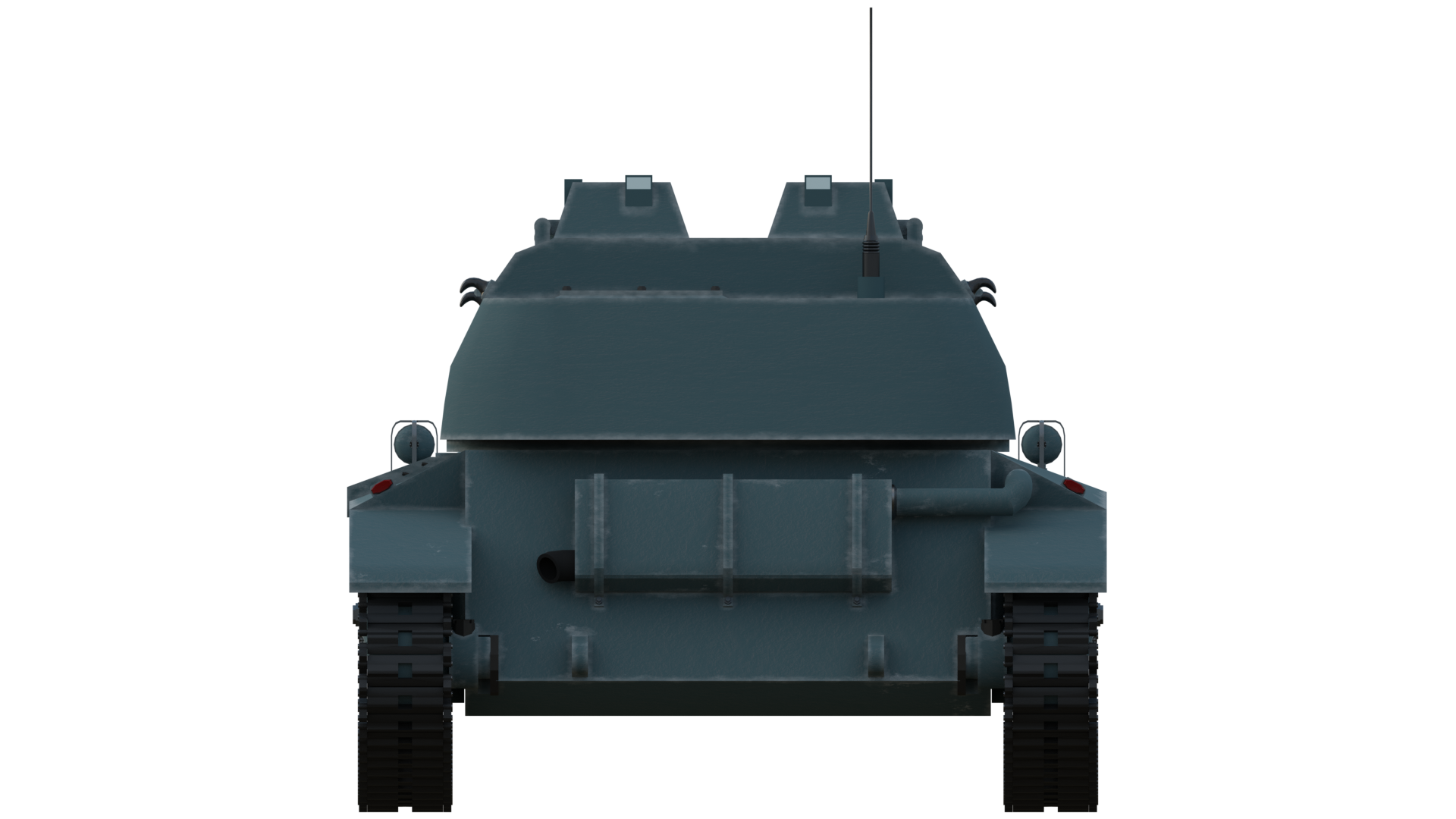
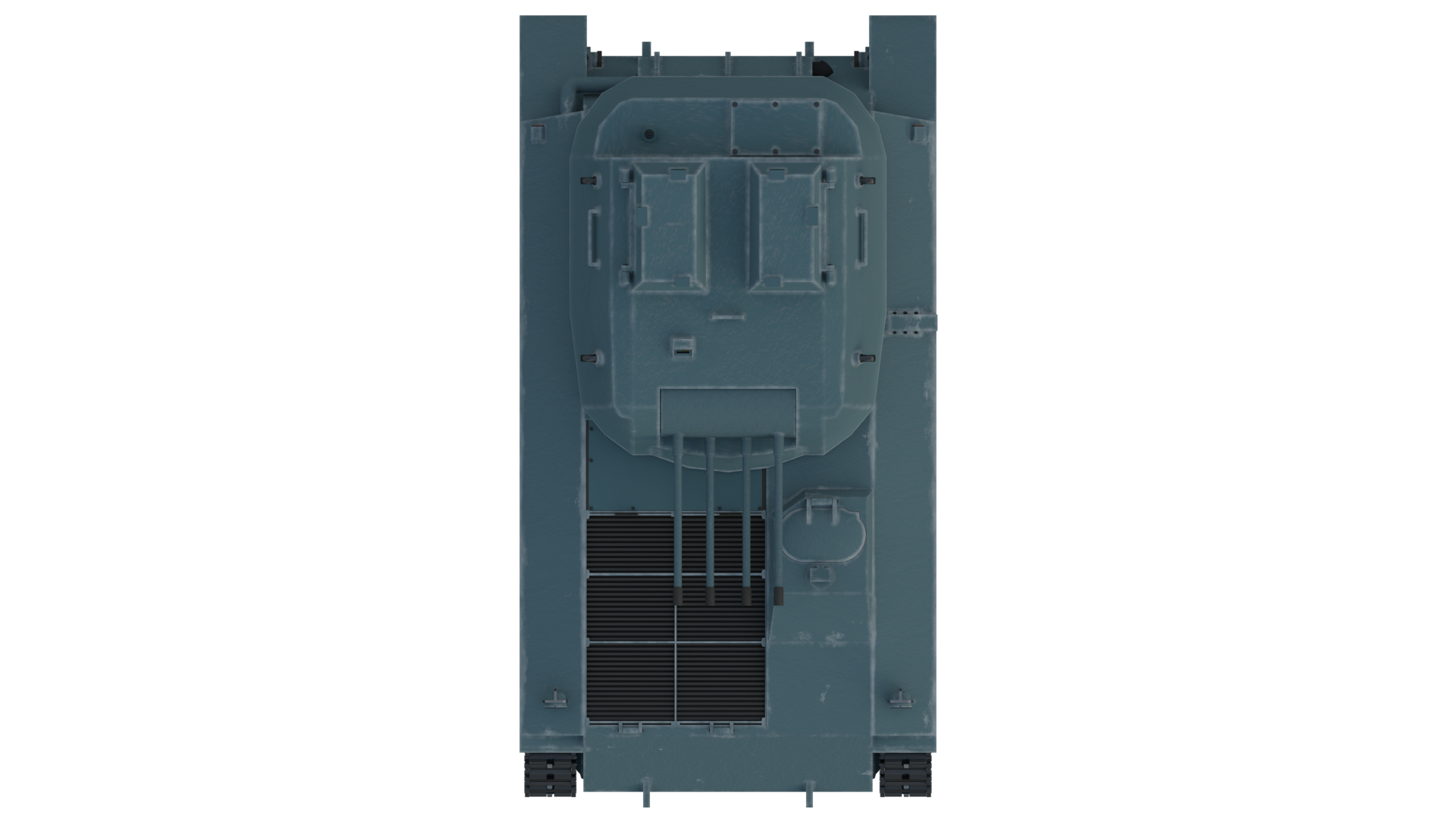
FCM 12t specifications (configuration with the FL 4 turret) |
|
| Dimensions (L x w x h) | 6.57 x 2.40 (2.50 with wider tracks) x 2.08 m |
| Weight | 12.5 metric tonnes |
| Engine | Mathis 8 G X 00 |
| Cylinders | 8 (6.560 L) |
| Standard rotation rate | 3,000rpm |
| Horsepower output | 210 hp |
| Power-to-weight ratio in hp/tonne | 16.8 |
| Gearbox | 4 forward (8 with reductor) / 1 reverse |
| Maximum speed | 64 km/h |
| Cruise speed | 37 km/h |
| Fuel tanks | 410 L |
| Range | 300 km |
| Transmission | Front |
| Suspension | ‘Christie-type’ with pneumatic springs |
| Road wheels | 4 |
| Track links | 83 per side |
| Track width | 30 cm or 35 cm depending on tracks |
| Crew | 3 (Driver, Gunner,Commander) |
| Main armament | 75 mm gun (future 75 mm SA 50) |
| Ammunition stowage | 45 rounds |
| Elevation and depression | +13° to -6° |
| Loading mechanism | 2x revolving automatic loading system with 6 rounds each /td> |
| Muzzle velocity | 1,000 m/s |
| Maximum armor penetration at 1,000m | 170 mm at 90° |
| Secondary armament | Coaxial 7.5 mm MAC 31 machine gun |
| Secondary armament | Coaxial 7.5 mm MAC 31 machine gun |
| 7.5mm ammunition stowage | 1,050 rounds |
| Hull armor | 30 mm equivalent (front), 20 mm (sides and rear), 10 mm (floor), uncertain but likely 10 mm (roof) |
| Turret armor | 40 mm equivalent (front), 16 mm (sides and rear), 10 mm (roof) |
| Number produced | 1 |
Sources:
French military archives of Châtellerault, made available by Colasix:
Service Historique de la Défense, Châtellerault 326 3H1 27
Service Historique de la Défense, Châtellerault 326 3H1 23
Les véhicules blindés français 1945-1977, Pierre Touzin, éditions EPA, 1978
Char-français

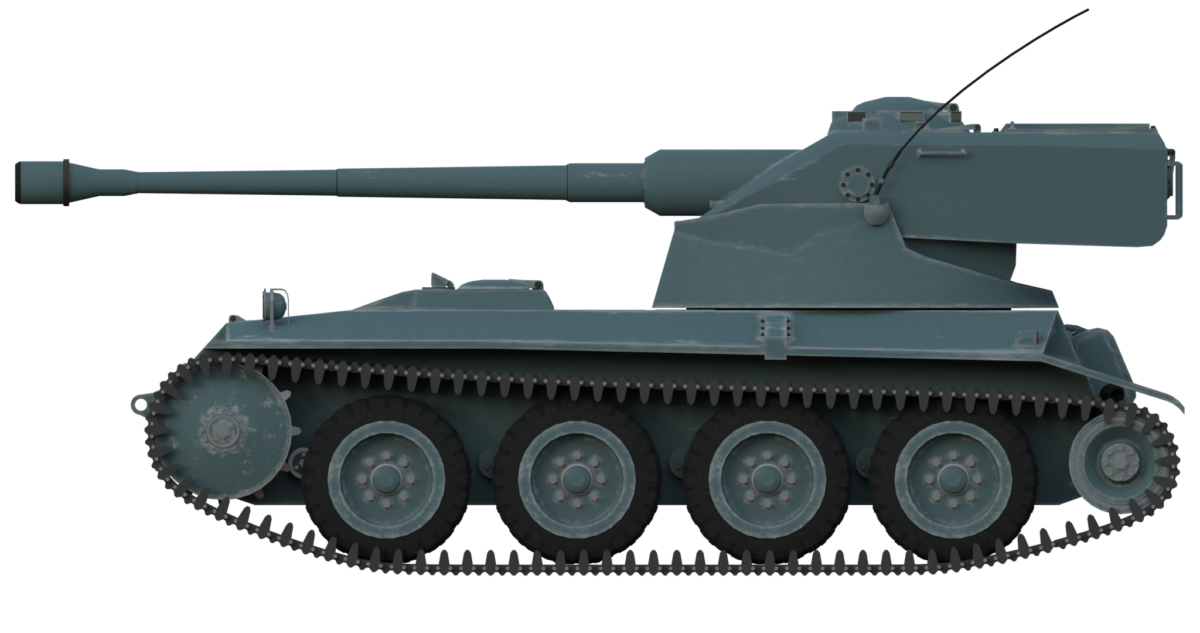
5 replies on “FCM 12t”
I’ve always wanted to see a detailed article on the 12t – well done!
Dear author! If you can edit the article after posting, please include the 12t-s inaccurate feature in World of Tanks.
Wrong 12t. This is the FCM one, WoT has the AMX one.
Oh. Sorry.
what the difference between FCM and AMX? because this model was not an AMX 12t and not a FCM 12t? thanks to respond !